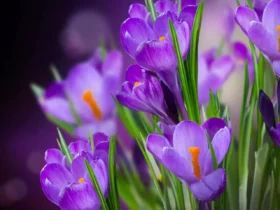In the realm of botany, few flowers evoke the same sense of intrigue and mystique as the Night-Blooming Cereus (Epiphyllum oxypetalum). Also known as the Queen of the Night or the Orchid Cactus, this enigmatic plant unfurls its exquisite blossoms only under the cover of darkness. With its captivating fragrance and ephemeral beauty, the Night-Blooming Cereus has enchanted poets, artists, and nature lovers for centuries. In this article, we explore the captivating world of this nocturnal wonder and unveil the secrets behind its mysterious allure.
Night-Blooming Cereus images


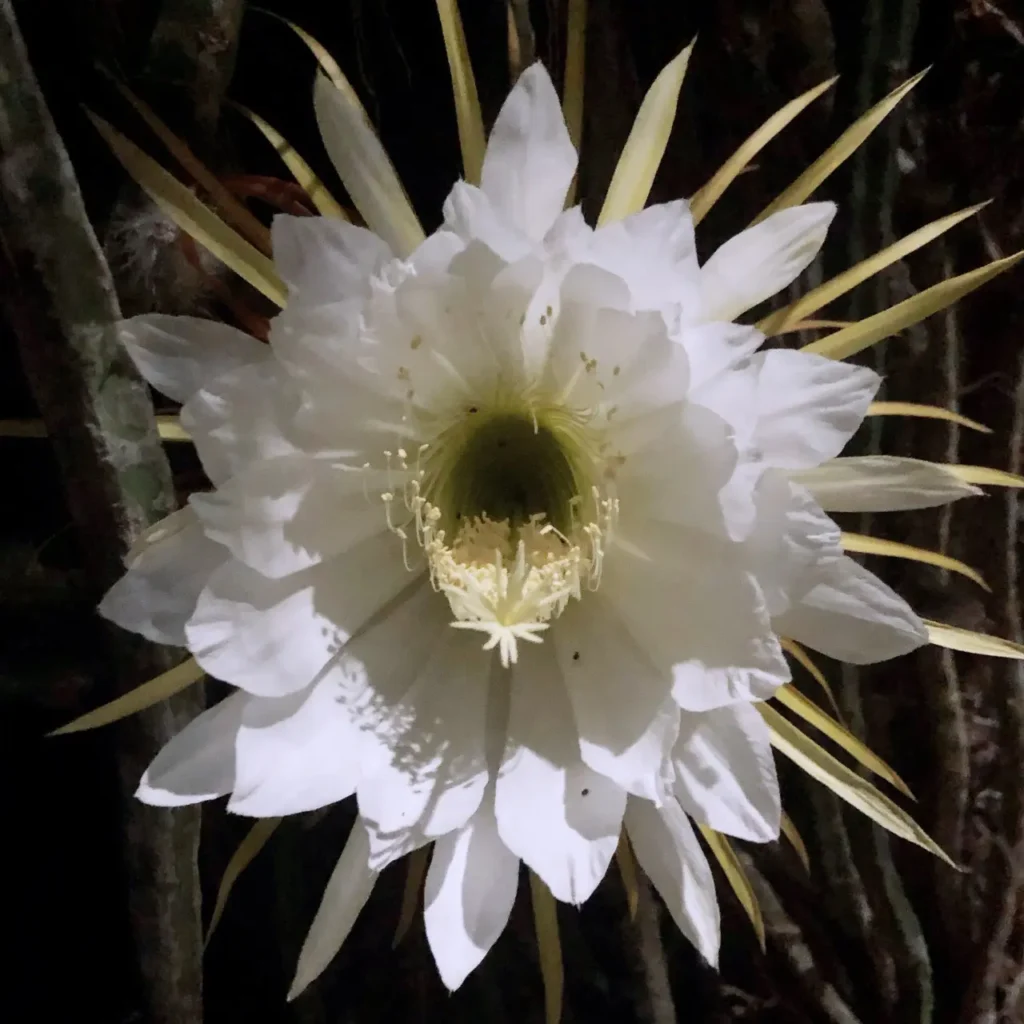
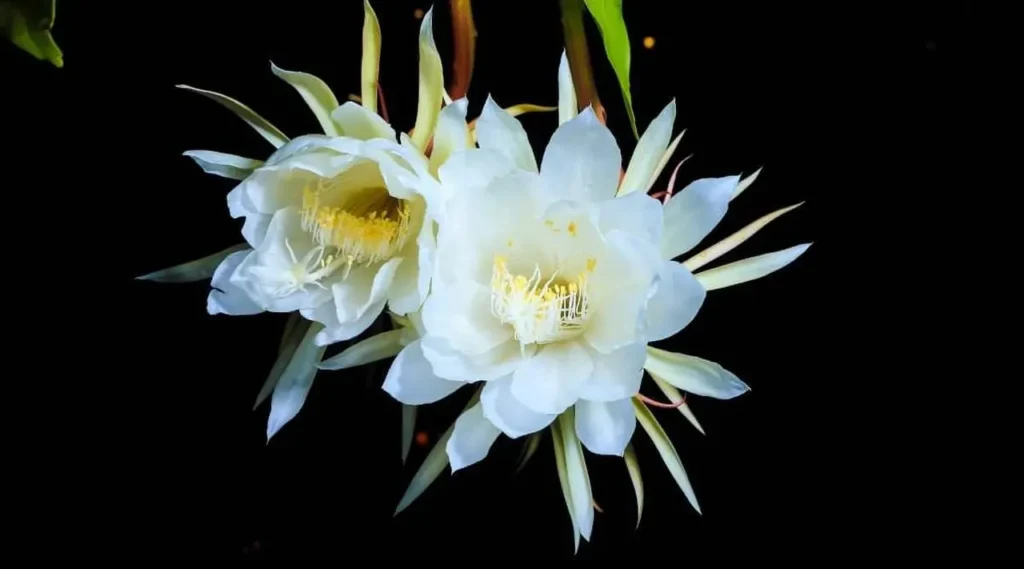
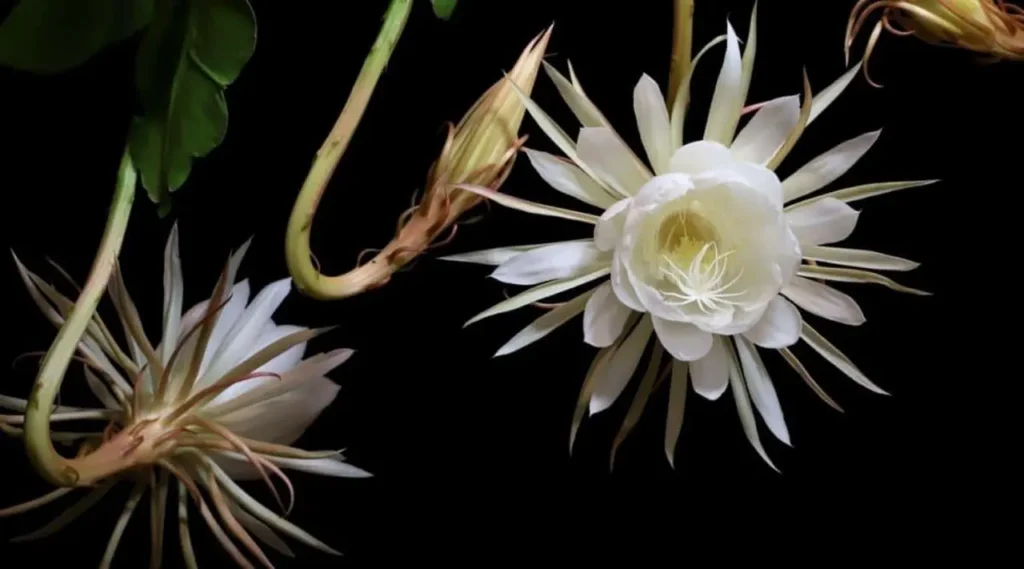
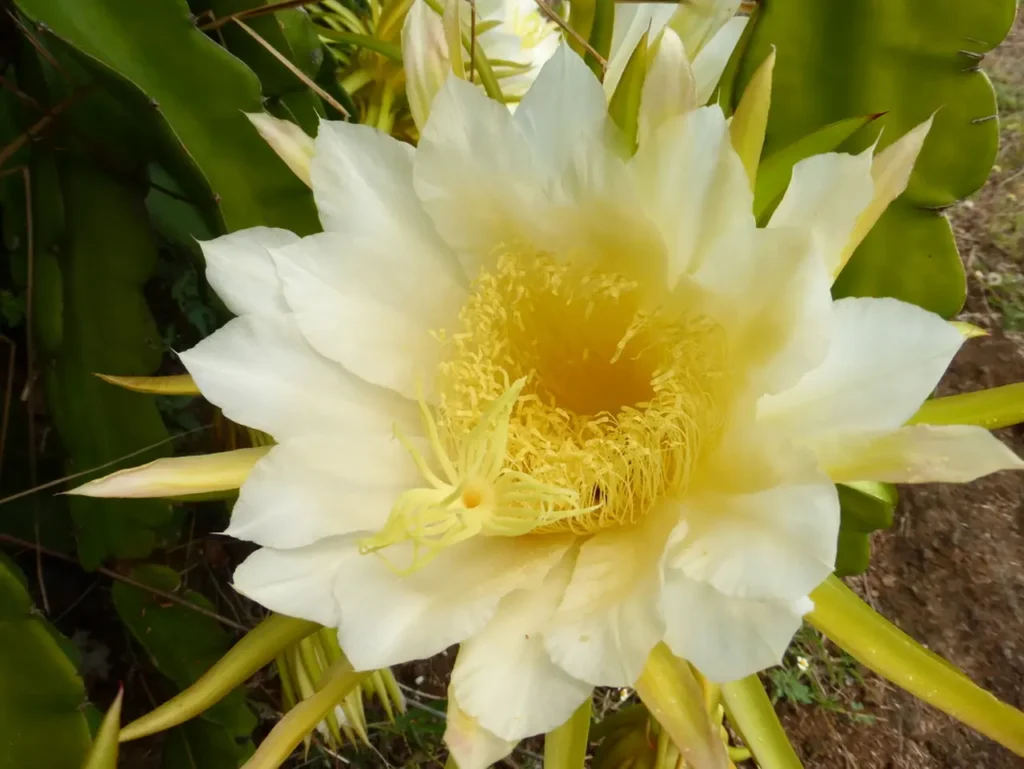
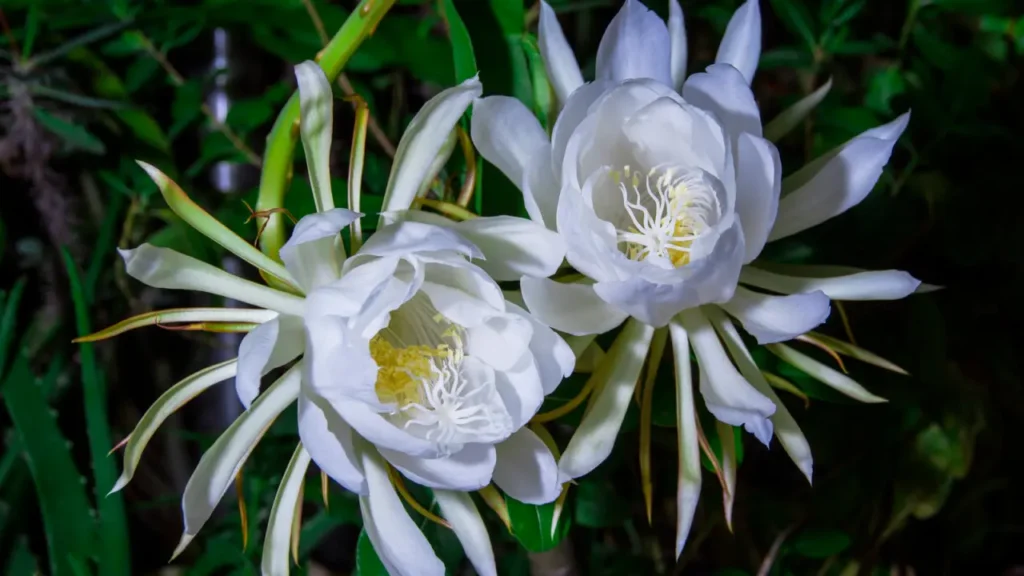
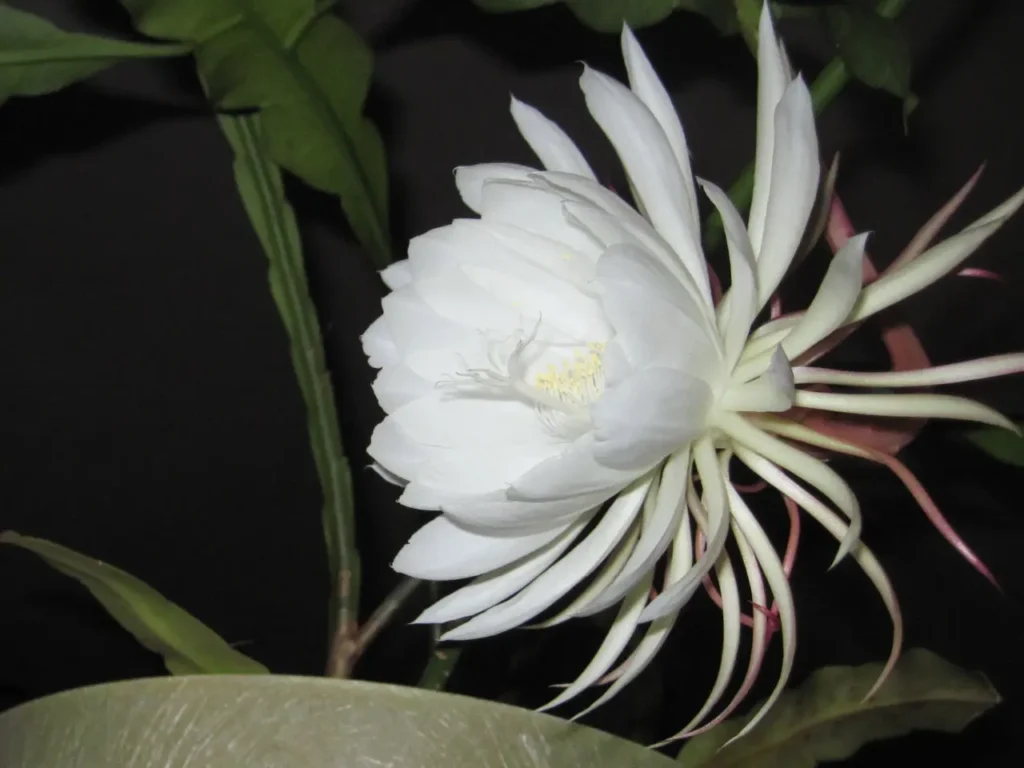

The Night-Blooming Cereus: A Nighttime Spectacle
The Night-Blooming Cereus is a member of the Cactaceae family, though it differs significantly from the stereotypical desert-dwelling cacti. Native to the tropical regions of Central and South America, as well as the Caribbean, this epiphytic cactus has adapted to a wide range of habitats, from rainforests to dry woodlands.
While the Night-Blooming Cereus might appear unremarkable during daylight hours, it undergoes a transformative metamorphosis at night. As dusk descends, the plant comes alive, and its buds begin to unfurl. By the time the moonlight bathes the surroundings, the flowers reach their peak, creating an otherworldly spectacle under the cover of darkness. This nocturnal blooming pattern is an evolutionary adaptation to attract specific nighttime pollinators, such as moths and bats, ensuring the continuation of its species.
Exquisite Beauty and Fragrance
The blossoms of the Night-Blooming Cereus are a sight to behold. The large, funnel-shaped flowers boast elegant white petals that shimmer like celestial stars against the dark backdrop of the night. The petals are often delicately fringed, adding an air of ethereal grace to the blooms.
In addition to their visual appeal, the flowers emit a captivating fragrance that permeates the night air, often described as a heady blend of citrus, jasmine, and vanilla. This enchanting perfume serves as a potent lure for the cactus’s nocturnal pollinators, ensuring the successful transfer of pollen from one flower to another.
Cultural Significance and Symbolism
Throughout history, the Night-Blooming Cereus has held cultural significance and symbolic value in various societies. In some cultures, the flower is associated with love, beauty, and ephemeral moments of joy. In others, its fleeting bloom is seen as a reminder of the transient nature of life, inspiring poets and artists to capture its essence in their works.
Medicinal and Therapeutic Uses
Beyond its aesthetic and symbolic appeal, the Night-Blooming Cereus also possesses medicinal properties in traditional herbal medicine. Some indigenous communities have utilized the cactus for its potential health benefits, including anti-inflammatory and analgesic properties. However, it is essential to exercise caution when using any plant for medicinal purposes and to consult with a qualified herbalist or healthcare professional.
Cultivation and Care
Cultivating the Night-Blooming Cereus can be a rewarding experience, but it requires careful attention to its unique needs. As an epiphytic cactus, it thrives in well-draining soil, typically consisting of a mixture of peat, perlite, and bark. Providing a bright, indirect light during the day and cooler nighttime temperatures can stimulate blooming. Additionally, maintaining a consistent watering schedule and providing occasional feeding with a balanced fertilizer can contribute to its overall health and vigor.
The Night-Blooming Cereus stands as a reminder of the captivating mysteries that nature conceals under the cloak of darkness. Its nocturnal beauty, exquisite fragrance, and enigmatic allure continue to inspire wonder and awe in those fortunate enough to witness its ethereal blooms. As we marvel at the transient splendor of the Queen of the Night, let us cherish and protect these delicate treasures, ensuring their continued presence in the moonlit nights of the botanical world.
